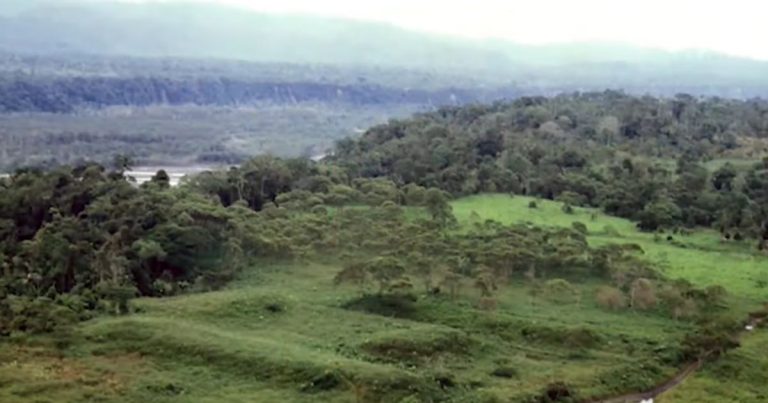With the deployment of airborne laser sensors, as well as traditional excavation techniques, archaeologists have discovered evidence of a massive, sophisticated lost city in the dense Amazon rainforest region of eastern Ecuador in the foothills of the Andes.
“This is older than any other site we know of in the Amazon,” lead researcher Stephen Rosten from France's National Center for Scientific Research told the BBC. “We have a Eurocentric view of civilisation, but this shows that we have to change our idea of what culture and civilization are.”
According to the survey of about 200 miles of the Amazon, the city – or network of “garden cities” – was built about 2,500 years ago and lasted for about 1,000 years, apparently rivaling Maya sites in Mexico and Central America.
Antoine Dorison, Rustin's colleague, explained to the BBC that the discovery “changes the way we see Amazon cultures. Most people imagine small groups, perhaps naked, living in huts and clearing the land. This shows that ancient people lived in complex urban societies.”
The startling discovery in Ecuador's Obano Valley, which was historically assumed to be sparsely populated, suggests that experts may only be scratching the surface when it comes to the size, scope and structure of ancient civilizations.
The city, which until now was hidden by dense forests, could not be described as primitive.
For ScienceNews, Rustin described it as an “entirely human-designed landscape” built by skilled urban planners.
University of Florida anthropology professor Michael Heckenberger seems to agree.
“This shows an unprecedented degree of complexity and density of settlement in this early time frame,” he told NewScientist.
At this point, archaeologists have not yet determined what happened to the Obano people who built five major settlements in the area. One theory is that volcanic eruptions may have caused the area to be abandoned.
Among other things, the archaeologists then intended to try to find out the size of the population when the area was inhabited.
The BBC reported that estimates range from tens of thousands to perhaps hundreds of thousands.
They also plan to survey an adjacent area of more than 100 miles in the valley.
In fact, there is still much we do not know about the full history of the Americas.
Advances in specialized knowledge could lead to further discoveries of lost cities that could challenge what has come to be known as settled science.
For example, the deployment of remote laser technology known as lidar (light detection and ranging) has enabled this new discovery.
The study by Rustin's team was published in the latest issue of the journal Science.
“Fieldwork and [Lidar] “The analysis revealed an anthropomorphic landscape comprising clusters of massive platforms, squares and streets that follow a specific pattern interwoven with extensive agricultural drains and terraces as well as wide straight roads extending over large distances,” the abstract of the scientific journal article states.
“The most notable feature of the landscape is the complex road system extending for tens of kilometres, connecting different urban centers, thus creating a regional network. Such intense early development in the upper Amazon is comparable to the similar Maya urban systems highlighted,” the abstract concluded. Most recently in Mexico and Guatemala.
This article originally appeared in The Western Journal.

